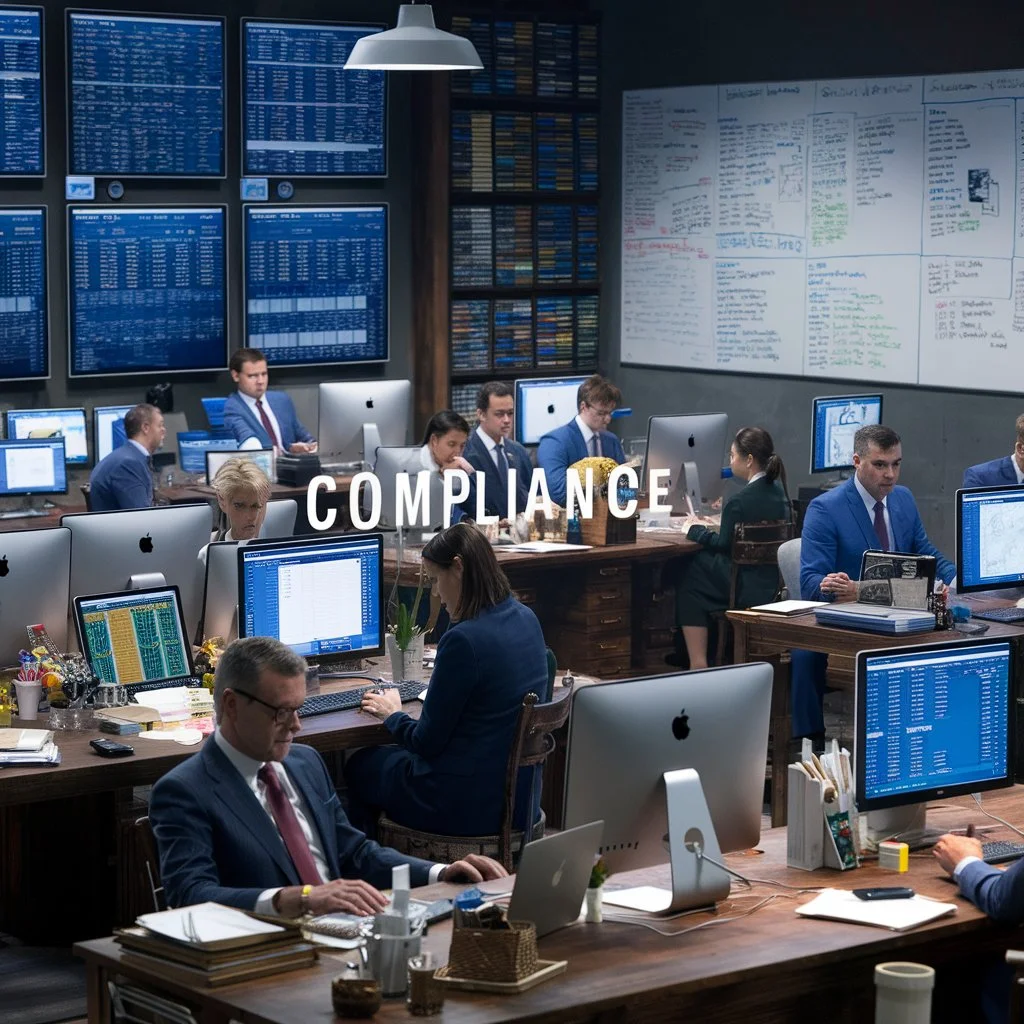What is it? Legal and Statutory Compliance Monitoring ensures that a company complies with all relevant laws, regulations, and internal policies.
What is it?
Legal and Statutory Compliance Monitoring ensures that a company complies with all relevant laws, regulations, and internal policies. It also involves regular assessments and audits to identify and rectify compliance issues, thus ensuring the organization operates in accordance with the legal limits set by regulators.

Why is Compliance Monitoring Important?
Compliance monitoring is very important to protect a company’s reputation from being tarnished, save it from litigation costs, and guarantee operational efficiency. It also helps in risk management, data protection measures availability, and maintaining stakeholder confidence.
How to Make a Compliance Monitoring Plan?
Developing an effective compliance monitoring plan entails understanding regulatory requirements, formulating clear objectives, assigning duties and responsibilities, and creating detailed action plans. Furthermore, this plan should include frequent audits, continuous surveillance, reporting mechanisms, and procedures for handling noncompliance noncompliance areas.
The Challenges Faced In Compliance Monitoring
Difficulties are experienced, especially because regulations continue evolving regularly, laws are intricate across different countries, and specialization may be required. Keeping consistent records accurately profiling employees on their obligations can also be demanding.
Comparing In-house Vs. Third-Party Vs. Hybrid Compliance Solutions
In-house compliance solutions offer better control over internal processes but can be resource-heavy.
Third-party compliance solutions provide professional insights that may prove cost-effective but lack an internal view.
Hybrid compliance solutions combine the strengths of an internal and a third-party approach, giving a more balanced and holistic approach to compliance strategy overall.
What is it? And Why Is It Important?
To avoid legal problems, defend their reputation, and guarantee smooth business operations, organizations have established systems that focus on maintaining regulatory standards internally, a process called Legal Compliance Management. This is important since it helps organizations avoid the legal pitfalls of lawlessness (nameless).
What Does Internal Monitoring of Compliance Ensure?
The company’s operations are subjected to compliance checks during internal control management or internal review. Internal assessments help identify measures that need implementation and areas for improvement.
What Should a Compliance Monitoring Plan Look Like?
The plan for compliance monitoring must contain the following:
- An unambiguous aim and extent
- Regulatory requirements, as well as internal policies
- Roles and responsibilities
- Processes of regular audits and continuous surveillance.
A way of making reports about any noncompliance noncompliance issues.
5 Steps To Design A Compliance Monitoring Program
1. Identify regulatory requirements: You must understand the relevant regulations and laws in your industry.
2. Develop internal policies: Develop inclusive policies that do not conflict with regulatory authority directives.
3. Assign responsibilities: Identify who will oversee the program at the institutional level and name a compliance officer or team to manage this process.
4. Implement monitoring procedures: Establish frequent audits and constant surveillance that will be used by an organization from now on.
5. Review and update regularly: Evaluate continuously how effective your enforcement regime is responding to changes in legal matters affecting your firm from time to time before updating it accordingly.
Compliance Monitoring And Internal Audit
Internal audit is a key component of compliance monitoring because it systematically evaluates an organization’s processes against documented standards/policies/regulations. There may also be other instances where an auditor needs to carry out additional tests to complete required procedures during each engagement. Regular internal audits can detect various forms of noncompliance noncompliance early, leading to corrective action being taken on time.
Compliance Monitoring Elements
Elements of a Strapping Compliance Monitoring System Include:
- Risk Evaluation Instruments
- Check and Oversight Policies
- Reportage and Paperwork Practices
- Training and Knowledge Generation Sessions
- Continuous Improvement Mechanisms
Why Is Compliance Monitoring Important?
To defend the information and ensure its privacy.
- Reducing Legal And Financial Hazards.
- Maintaining Effective Operations.
- Creating Stakeholder Confidence.
- Ensuring Ethical Business Conducts.
Improve Monitoring With Compliance Monitoring Software
Using compliance monitoring software can greatly improve the efficiency and effectiveness of monitoring programs. The tools do this by having automated audits, real-time reporting, and data analytics for easier identification and resolution of compliance-related compliance issues.

Monitoring Compliance: Defined
Compliance monitoring is tracking a company’s compliance with regulations from within and outside the institution. It ensures that the organization complies with all relevant laws and standards.
What is a compliance policy?
Compliance policies contain legally enforceable guidelines for how organizations are supposed to behave, which can vary from industry to industry. They outline the demands and responsibilities concerning observance.
Who is responsible for compliance monitoring?
This responsibility lies in most cases with a specialized legal officer or team. Nonetheless, it requires teamwork between internal audit, HR, and legal departments.andBusinesdepartments, ses without a Compliance Officer
- There are still ways through which establishments with no specific officer assigned to check on compliance can remain compliant, including:
- Handing over some of their employee’s tasks associated with ensuring conformity;
- Turning to third-party service providers who could give guidance on various aspects of adherence;
- and Installing strong systems used for tracking observance;
Establishing an observance plan for use in future operations;
A Comprehensive Plan For Compliance Monitoring
- An effective monitoring plan will consist of aspects like:
- Understanding Regulatory Requirements,
- Setting Out Clear Objectives In Terms Of Compliance,
- Appointment Of Various Tasks And Responsibilities,
- Monitoring And Reporting Procedures,
- Review And Update Consistently.
What is compliance monitoring: An essential guide for businesses
This manual defines compliance monitoring and its significance to firms in ensuring compliance with the laws governing them, avoiding penalties, and maintaining operational integrity. It considers the process, hurdles, and solutions involved to give the reader a full understanding of how to achieve successful compliance monitoring.
High level: Understanding compliance monitoring
At an altitude, conformity checking embraces organized systems through which legislation and internal regulations are monitored or adhered to. This is done for risk management purposes and to follow regulation provisions.
Key components of a good compliance monitoring system
A good system for verification of conformity should have the following:
- Risk Assessment Tools;
- Occasional Testing And Evaluation Of Program Compliance;
- Clear Documentation And Reporting Obligations;
- Training And Awareness Programs;
- Automatic Oversight Software.
The role of technology in compliance monitoring
This technology efficiently does this by, among others:
- Automating audits and reporting process;
- Providing instant data on adherence rates;
- Enhancing risk management using predictive analytics ;
Protecting data and ensuring privacy
Companies use compliance monitoring to preserve sensitive information, enforce strict data protection regulations, and perform regular base checks.
Mitigating legal and financial risks
NoncomplianceNoncompliance is avoided, leading to fewer penalties imposed by law and minimizing financial losses. Again, it facilitates adherence to regulatory requirements, thus preventing any risks associated with non-observance.
How to develop a more effective compliance monitoring plan
Developing an effective compliance monitoring plan entails the following:
- Evaluate compliance risks
- Define explicit goals
- Assign roles and responsibilities
- Implement monitoring procedures
- Review and update the program regularly.
I am evaluating compliance risks.
Assessment of risk exposes the firm to liability for potential noncompliancenoncompliance areas. This helps prioritize where to direct a monitor’s efforts while resources are still available.
Carry out a Compliance Audit.
Regular compliance audits enable systematic assessment of adherence to laws and policies. With time, these audits will identify gaps and areas that require improvement, guaranteeing continuous compliance.
Subject your policy decisions stress test.
Stress-testing compliance policies involves simulating potential scenarios to evaluate their effectiveness. Such testing facilitates the identification of system weaknesses, enabling necessary changes.
Identify prospective risk zones.
Identifying potential risk areas encompasses examining business operations and processes to establish likely noncompliance points. Proactive approaches help mitigate risks before they become significant problems.
Keep track of how successful your compliance program is performing.
Monitoring the success of a Compliance Program includes tracking key performance indicators (KPIs) and regularly reviewing Compliance Metrics. In other words, it allows for effectiveness and adaptation based on changes in regulations and legislation.

COMMENTS